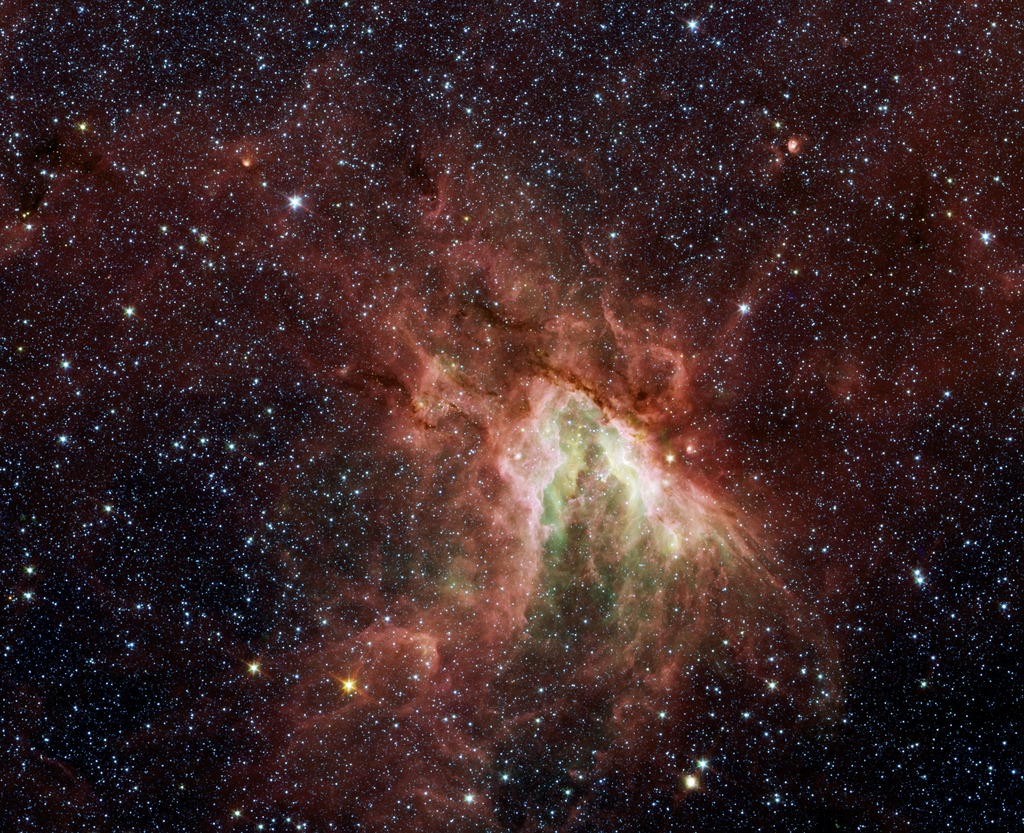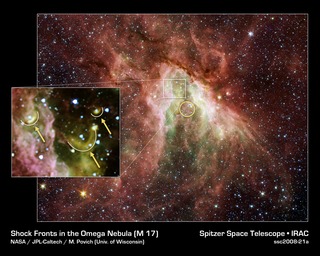
Credit: NASA/JPL-Caltech/M. Povich (Univ. of Wisconsin)
Observation • December 8th, 2008 • ssc2008-21a1
ssc2008-21a1
NASA's Spitzer Space Telescope has captured a new, infrared view of the choppy star-making cloud called M17, also known as the Omega Nebula or the Swan Nebula.
The cloud, located about 6,000 light-years away in the constellation Sagittarius, is dominated by a central group of massive stars -- the most massive stars in the region. These central stars give off intense flows of expanding gas, which rush like rivers against dense piles of material, carving out the deep pocket at center of the picture. Winds from the region's other massive stars push back against these oncoming rivers, creating bow shocks like those that pile up in front of speeding boats.
Three of these bow shocks are nestled in the upper left side of the central cavity, but are difficult to spot in this view. They are composed of compressed gas in addition to dust that glows at infrared wavelengths Spitzer can see. The smiley-shaped bow shocks curve away from the stellar winds of the central massive stars.
This picture was taken with Spitzer's infrared array camera. It is a four-color composite, in which light with a wavelength of 3.6 microns is blue; 4.5-micron light is green; 5.8-micron light is orange; and 8-micron light is red. Dust is red, hot gas is green and white is where gas and dust intermingle. Foreground and background stars appear scattered through the image.
About the Object
- Name
- Omega Nebula • Swan Nebula • Messier 17 • M17 • NGC 6618
- Type
- Nebula > Type > Star Formation
- Star > Spectral Type > O
- Distance
- 6,000 Light Years
Color Mapping
| Band | Wavelength | Telescope |
| Infrared | 3.6 µm | Spitzer IRAC |
| Infrared | 4.5 µm | Spitzer IRAC |
| Infrared | 5.8 µm | Spitzer IRAC |
| Infrared | 8.0 µm | Spitzer IRAC |
Astrometrics
- Position (J2000)
- RA =18h 20m 27.6s
- Dec = -16° 5' 8.5"
- Field of View
- 53.5 x 43.5 arcminutes
- Orientation
- North is 61.9° left of vertical





